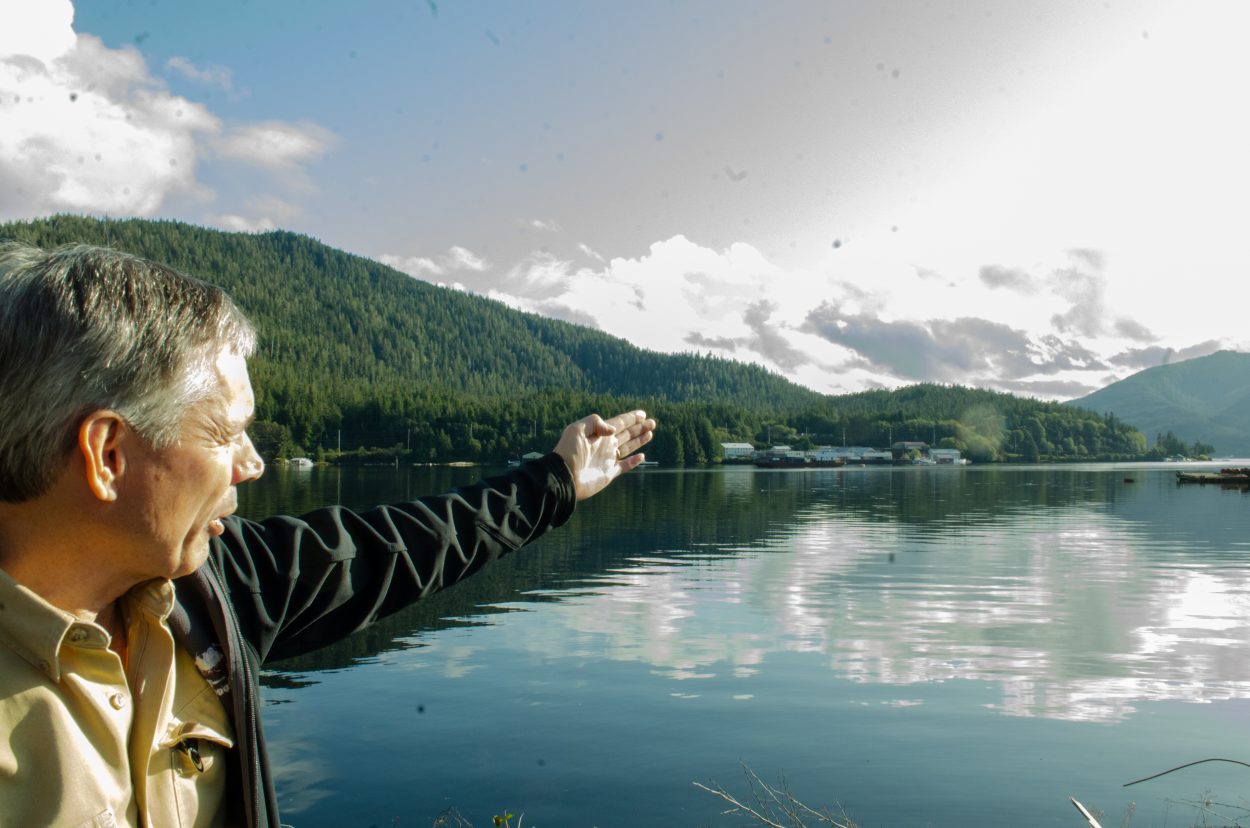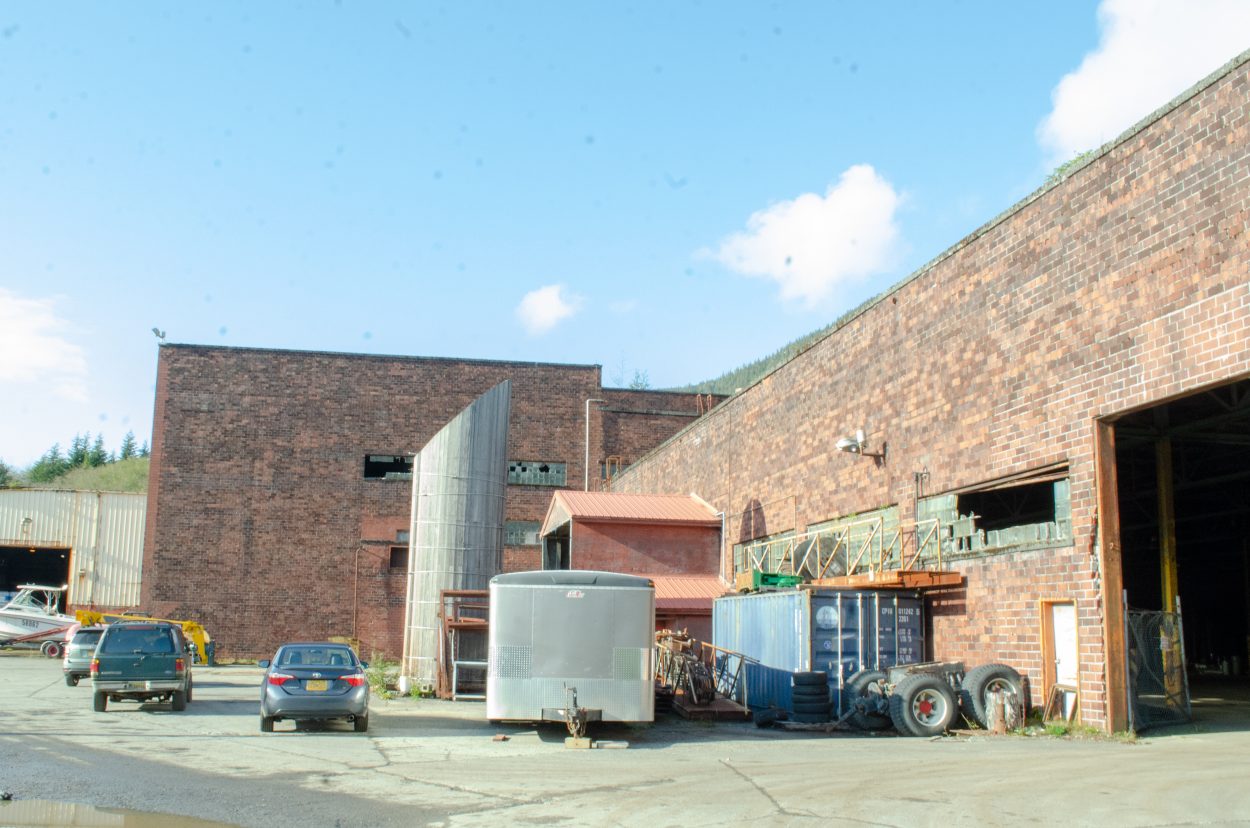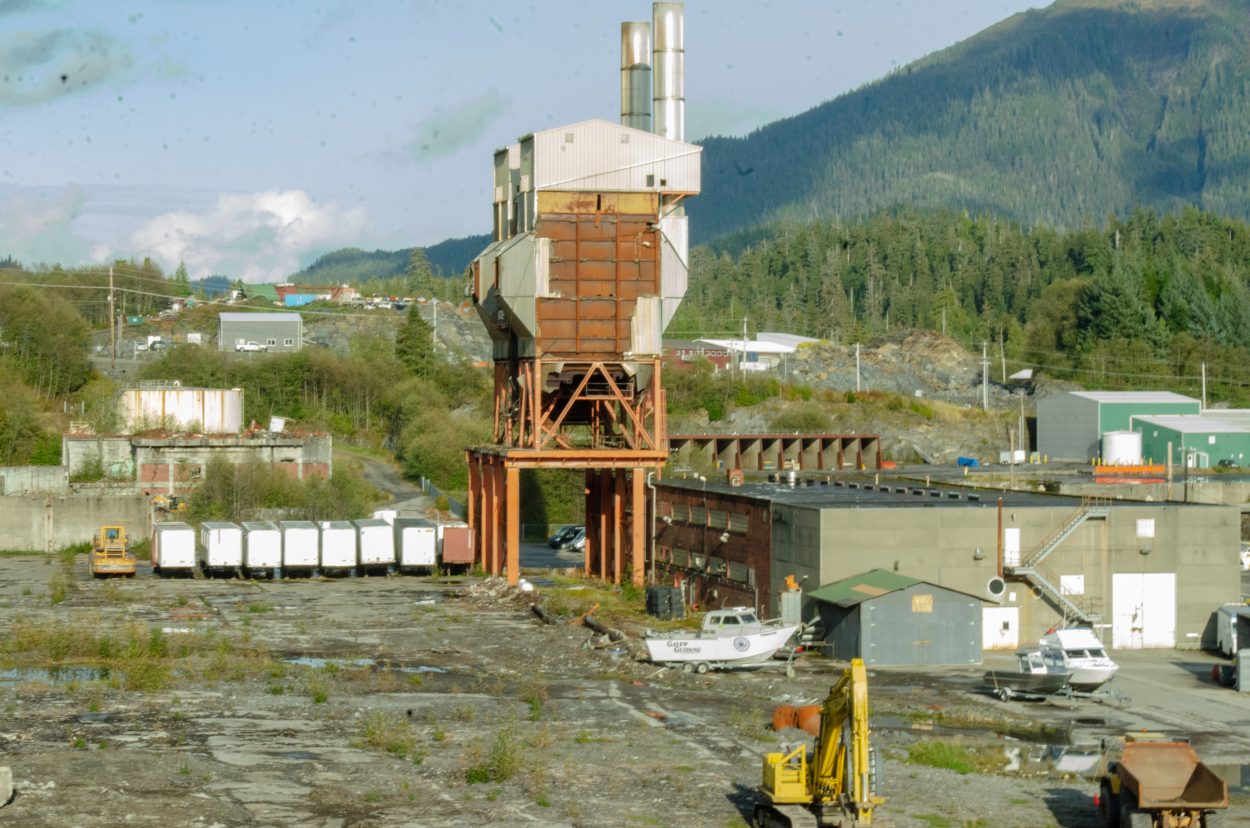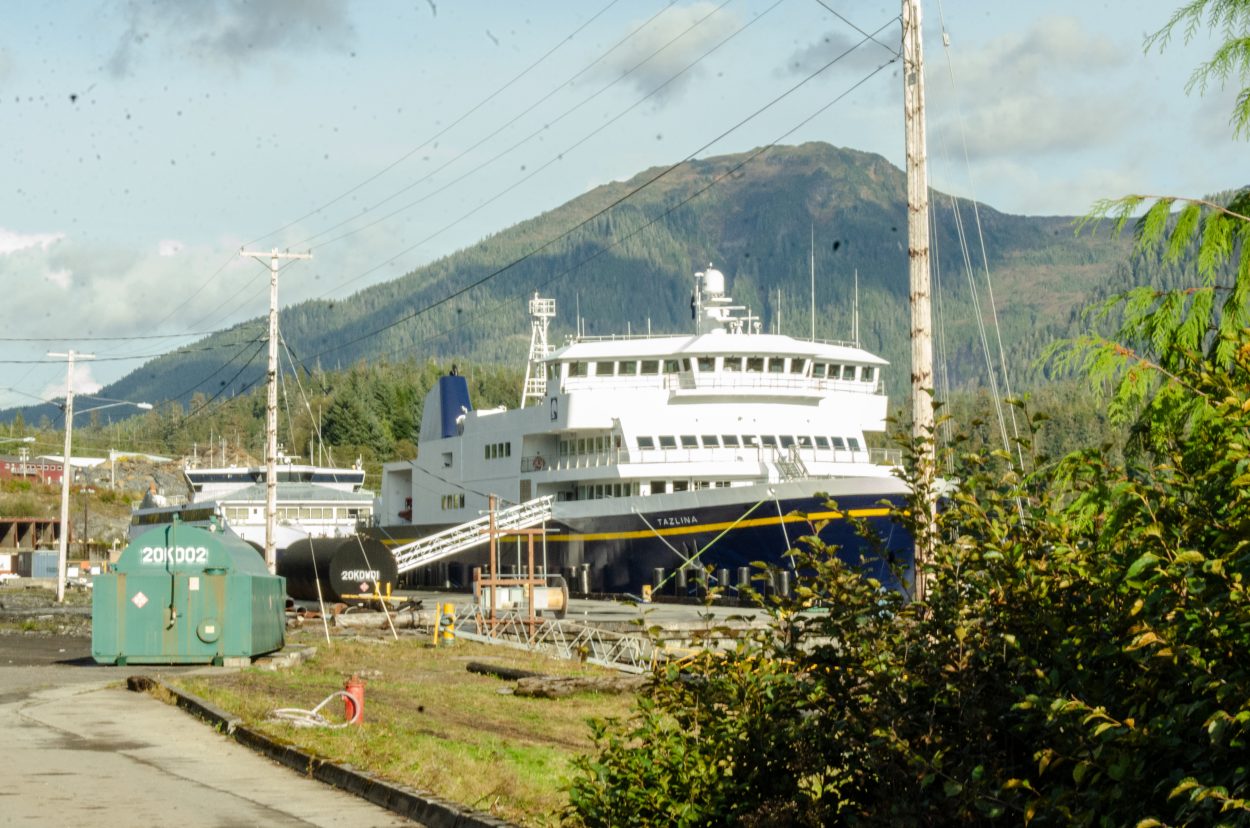
Private developers want to build a cruise ship dock in Ketchikan’s Ward Cove. It’s the clearest example yet of Ketchikan’s economic transformation from timber to tourism.
For over 40 years, Ward Cove was home to the engine that drove Ketchikan’s economy. The Ketchikan Pulp Company took the old growth of the Tongass National Forest and turned it into dissolvable pulp, a raw material used to make things like cellophane and rayon. Reports estimate the mill directly employed about 500 people and supported more than 500 more jobs beyond that.
Back in the pulp mill’s heyday, former employee Jim Luther said there was money to be had. Ketchikan’s population was growing.
“All the bars were pretty much elbow to elbow,” he said. “And there were bigger bars.”
But then came the reforms of the 1990s. Subsidies for Tongass timber were slashed. And the business was simply getting tougher. Pulp production started to move overseas. More and more of the Tongass was off-limits because of environmental regulation.
“There wasn’t room in the National Forest at that point for the volume and the old school pulp mill ways,” Luther said. “I mean, that’s that’s my opinion. it’s like the economics weren’t there to run that place.”
After a few unprofitable years, the Ketchikan Pulp Company closed its doors in 1997. And in the years afterward, the town quieted down. Census Bureau data shows Ketchikan’s population dropped nearly 10 percent in the years after the mill closed.
But around that same time, Ketchikan — and all of Southeast Alaska — was in the midst of a revolution in the tourism industry. The Southeast Conference, which tracks economic trends in the region, says cruise passenger numbers doubled to over half a million between 1990 and 2000. Next year, the Southeast Conference estimates Ketchikan will host over one-and-a-quarter million visitors.
And now, the old economic engine in Ward Cove might be getting an overhaul. Fairbanks-based businessman John Binkley partnered with local Ketchikan investors Dave and Andrew Spokely to develop the former pulp mill site. Now, along with Norwegian Cruise Line, they hope to turn it into a new cruise ship terminal for some of Alaska’s largest ships.
To get a better idea of what the project entails, take a trip down to the old pulp mill. After passing through a parking lot that serves the Alaska Marine Highway System’s headquarters, there’s industrial equipment and metal pre-fab buildings. John Binkley, one of the investors behind the proposed dock, gets out of a car next to an enormous red brick warehouse.

“And it’s a classic 1953 era brick building,” Binkley said. “We’re going to be cleaning it all up, repairing all the damaged brick, replacing all the broken windows that are in here.”
He walked into the expansive warehouse and pointed to some old train tracks built into the foundation.
“This to the right as you walk in was actually a railroad track,” he said. “Many people may not realize that, but they had railroad cars that came in here to take the pulp out.”
He said he sees the mill site as an opportunity to illustrate Ketchikan’s economic transformation.

“This was the really the heartbeat of not only the economy for Ketchikan, but all of Southeast,” Binkley said. “This was really the gateway to the Tongass National Forest.”
But the mill site’s history presents some roadblocks for Binkley and his fellow investors.
In the years before and after the pulp mill closed, regulators discovered pollution on the mill site and at the bottom of Ward Cove. Ketchikan Pulp Company had dumped waste into the water and allowed logs to sink to the seafloor. Those decomposing logs produced toxins that made the seafloor uninhabitable for a variety of bottom-dwelling creatures.
They capped the rotting logs with a six-to-twelve-inch layer of sand. The agency says that 80-acre sand cap allowed life to rebound on the seafloor.
“When the EPA looked at shutting down the mill and rehabilitating this site, they looked at what this might be in the future,” Binkley said. “They didn’t want it to be just a place that became rundown and derelict and unusable.”
The EPA’s website reflects that idea: one of the goals of its cleanup program is to make polluted sites productive again. But some worry cruise ships’ powerful propellers could disturb the sand cap that’s allowed bottom-dwellers to rebound in Ward Cove.
Garrett Johnson is a licensed marine pilot who regularly drives cruise ships in Alaska. He spoke with CoastAlaska earlier this year.
“We sure move a whole lot of water around on a massive ship like that,” he said. “I’m not convinced we’re not going to wash that sand cap and its material off the bottom.”
That’s got one of the site’s neighbors concerned, too. The state ferry system has facilities right next door.

Benjamin Storey is the regional environmental manager for the Alaska Department of Transportation. He said the agency plans to build a ferry terminal and berthing facility on its side of the cove. He’s concerned that if piledriving or ship traffic disturb the sand cap, the effects could spill over onto state property.
“Any kind of disturbance to that sand cap that creates any kind of recontamination,” Storey said, “we’re going to have to take that into effect with our design, or if any future designs are going to have to call for remediation.”
Binkley said he’s confident the ships won’t disturb the sand cap. He said the current dock on the site — where some state ferries are currently tied up — was designed to be deep enough to prevent ships’ propellers from damaging the sand cap. There, it’s 44 feet deep.
But he said the new dock goes above and beyond that. He gestured out into the water, perpendicular to the shoreline.
“And that’s why we decided to place it in this direction, away from the shore, where the propellers would be in 127 feet of water rather than 44 feet of water and not over the sand cap,” Binkley said.
Beyond that, Binkley said he’ll work with the EPA and the Alaska Department of Environmental Conservation to monitor the sand cap both during construction and afterwards, once ships start arriving.
Binkley and his fellow investors are waiting for the Army Corps of Engineers to sign off on their plans for the dock. The Army Corps hasn’t said when it will come to a decision, but the developers are optimistic the new facility may open in time for the 2020 cruise season.
This story was produced as part of a collaboration between KRBD and Alaska’s Energy Desk.








